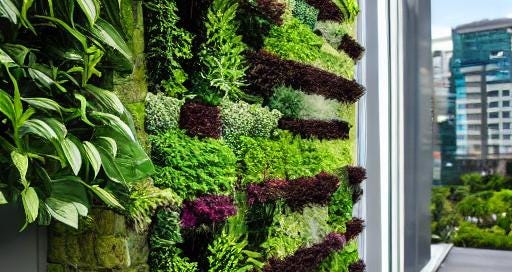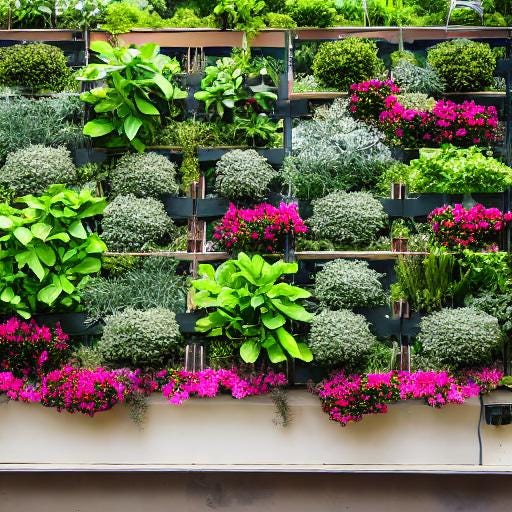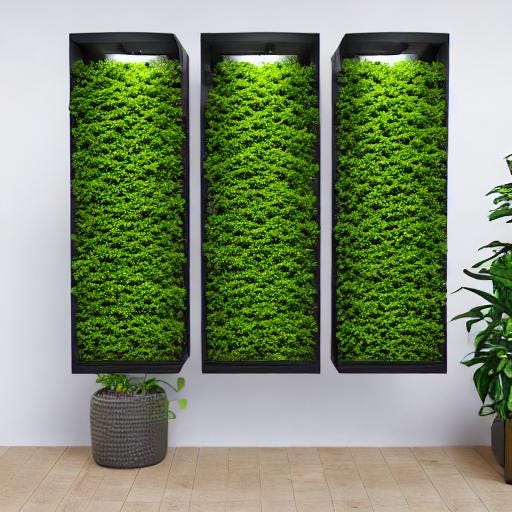Maximizing Small Spaces: Vertical Gardening Tips
Transform Your Urban Environment with Innovative and Space-Saving Gardening Techniques
Urban living often comes with the challenge of limited space, making traditional gardening a luxury for many. However, vertical gardening offers a creative and efficient solution for those wanting to bring greenery into their small spaces.
By growing plants upward rather than outward, you can maximize the use of your available area. This article explores the concept of vertical gardening and provides practical tips to help you create a thriving garden, even in the smallest of spaces.
Understanding Vertical Gardening
Definition and Basics
Vertical gardening involves cultivating plants on vertically inclined surfaces rather than traditional horizontal garden beds. This method can be achieved through various systems, including wall-mounted planters, trellises, hanging pots, and stacked containers. The idea is to grow plants in a way that utilizes vertical space efficiently, making it perfect for small apartments, balconies, and urban environments where horizontal space is limited.
Vertical gardening can be divided into several categories:
Living Walls (Green Walls): These are panels of plants grown vertically using hydroponics or soil-based systems. Living walls can cover large surfaces and are often used for their aesthetic appeal and environmental benefits.
Vertical Planters: These include shelves, tiered planters, and repurposed items like pallets or shoe organizers. They are easy to set up and can hold a variety of plants.
Trellises and Climbing Structures: These support climbing plants like beans, peas, and vines, allowing them to grow upward.
Hanging Gardens: Pots or baskets suspended from ceilings or mounted on walls, ideal for trailing plants and herbs.
Benefits
Vertical gardening offers numerous advantages, especially for those with limited space:
Efficient Use of Space: Vertical gardens make use of unused vertical surfaces, allowing you to grow more plants in a limited area. This is particularly useful for apartment balconies, small patios, or narrow outdoor spaces.
Enhanced Aesthetics: Vertical gardens add visual interest and can transform bare walls into lush, green landscapes. They serve as natural art pieces and can significantly enhance the ambiance of any space.
Increased Yield: By growing plants vertically, you can increase your garden's productivity. Plants like tomatoes, cucumbers, and beans thrive in vertical gardens, often producing more fruit compared to traditional horizontal gardens.
Improved Air Quality and Insulation: Plants help filter the air by absorbing pollutants and releasing oxygen. Vertical gardens can improve indoor air quality and provide additional insulation to buildings, helping to regulate temperature and reduce energy costs.
Reduced Pest and Disease Issues: Elevating plants off the ground can help reduce the risk of soil-borne diseases and pests. Improved air circulation around the plants can also minimize the occurrence of fungal infections.
Accessibility: Vertical gardens can be easier to maintain, especially for those with mobility issues. Since plants are elevated, there's less need for bending or kneeling, making gardening more accessible and enjoyable.
Environmental Impact
Vertical gardening can have positive environmental effects:
Urban Heat Island Mitigation: Green walls and vertical gardens can help reduce the urban heat island effect by cooling the surrounding environment.
Biodiversity: Vertical gardens can create habitats for various pollinators, such as bees and butterflies, contributing to urban biodiversity.
Water Management: Many vertical garden systems include efficient irrigation methods, such as drip irrigation or hydroponics, which can reduce water usage compared to traditional gardening methods.
By understanding the basics and benefits of vertical gardening, you can appreciate its potential to transform small spaces into vibrant, productive gardens. This approach not only maximizes space but also enhances the quality of life by bringing nature into urban environments.
Planning Your Vertical Garden
Assessing Your Space
Start by evaluating the space you have available. Look for walls, balconies, or fences that receive adequate sunlight, as most plants need at least six hours of sunlight per day. Measure the dimensions to understand the scope of your potential garden.
Choosing the Right Plants
Select plants that are well-suited for vertical gardening. Consider:
Herbs and Leafy Greens: Basil, parsley, lettuce, and spinach are great options.
Climbing Plants: Tomatoes, peas, and beans thrive when grown vertically.
Decorative Plants: Succulents, ferns, and flowering vines can add beauty to your garden. Choose plants based on their height, weight, and growth patterns to ensure they fit well in your vertical setup.
Materials and Structures
Various materials and structures can be used for vertical gardening:
Pallets: Repurposed wooden pallets can be transformed into vertical planters.
Shelves: Tiered shelves can hold multiple pots and maximize vertical space.
Hanging Pots: Pots can be suspended from ceilings or mounted on walls. Opt for durable, weather-resistant materials to ensure the longevity of your garden.
Setting Up Your Vertical Garden
Installation Tips
Follow these steps to set up your vertical garden:
Prepare the Space: Clean and prep the wall or structure where the garden will be installed.
Install Supports: Securely anchor supports such as trellises, shelves, or hooks.
Arrange Plants: Position plants according to their sunlight needs, placing taller plants at the bottom and shorter ones at the top for optimal light exposure.
Soil and Watering Systems
Choose a high-quality soil mix that provides good drainage and aeration. Implement efficient watering systems, such as drip irrigation or self-watering planters, to ensure plants receive consistent moisture without overwatering.
Maintenance and Care
Regular Maintenance Practices
Maintain your vertical garden with these regular practices:
Pruning and Harvesting: Regularly prune plants to promote healthy growth and maximize yield. Harvest crops as they mature to encourage continuous production.
Pest and Disease Management: Inspect plants regularly for signs of pests or diseases. Use organic treatments to manage any issues that arise.
Seasonal Care
Adapt your garden care routine to the changing seasons:
Summer: Ensure plants receive adequate water and shade from intense sunlight.
Winter: Protect plants from frost by using covers or moving them indoors if possible.
Spring and Fall: Focus on planting new crops and refreshing soil as needed.
Creative Ideas and Inspirations
DIY Projects
Get creative with these simple and affordable DIY vertical garden ideas:
Recycled Materials: Use old gutters, shoe organizers, or wooden crates to create unique planters.
Living Walls: Install a living wall system for a dramatic and lush vertical garden.
Innovative Designs
Be inspired by innovative vertical garden designs from around the world:
Urban Greenhouses: Cities like New York and Tokyo feature stunning vertical gardens that transform urban spaces into green havens.
Community Projects: Community gardens often utilize vertical gardening to maximize their limited space, providing fresh produce and a sense of community.
Conclusion
Vertical gardening is a powerful way to maximize small spaces, bringing the benefits of nature into urban environments. By understanding the basics, carefully planning your garden, and maintaining it with regular care, you can enjoy a thriving vertical garden.
Start your vertical gardening journey today and transform your small space into a lush, green sanctuary. Share your experiences and tips with others to inspire more urban gardeners to embrace this innovative approach.






